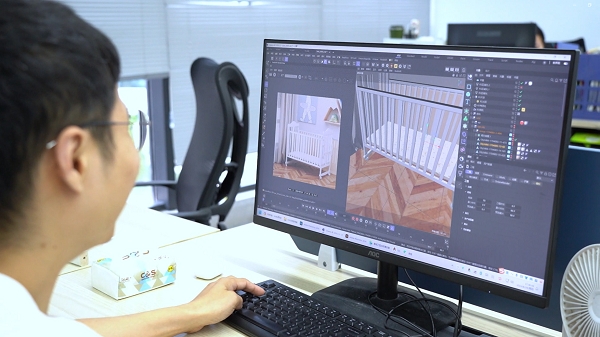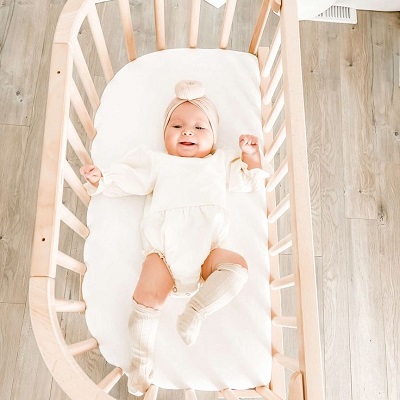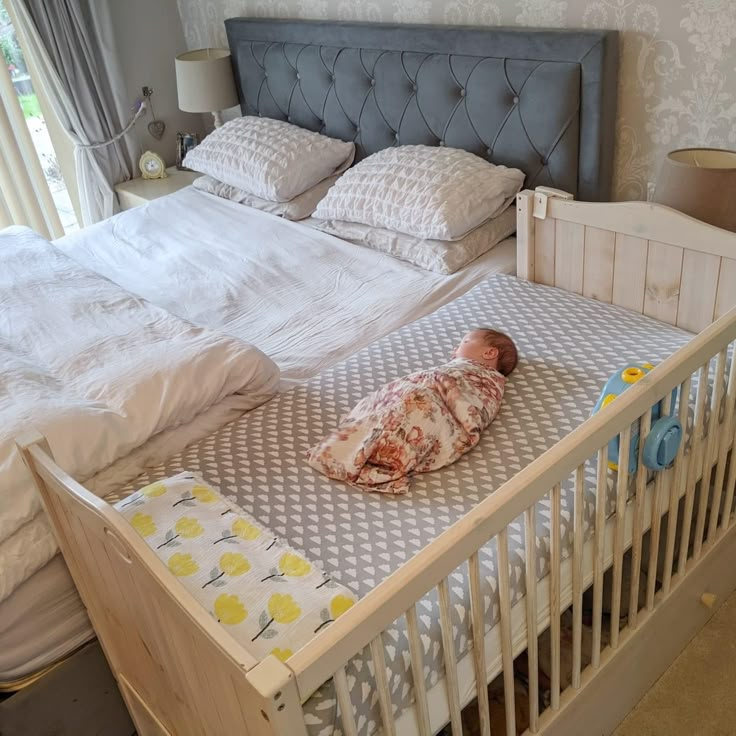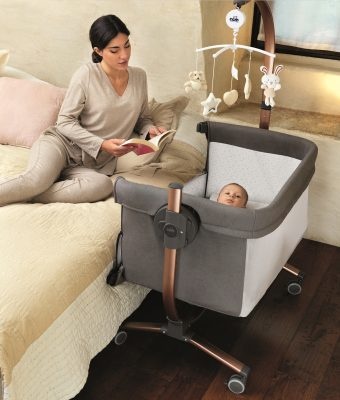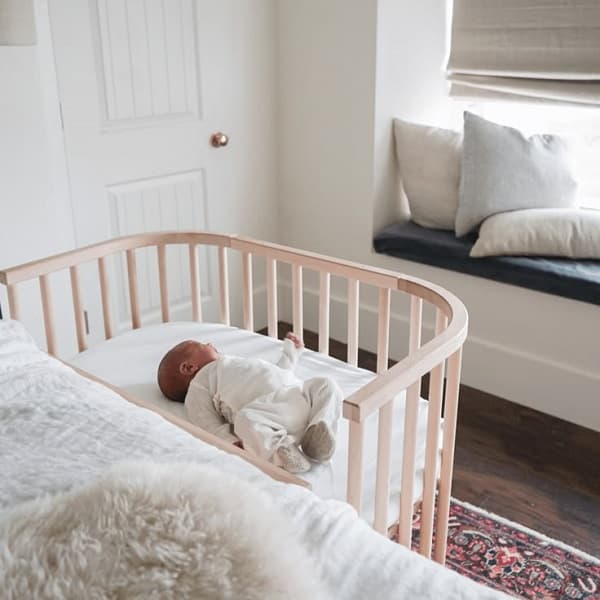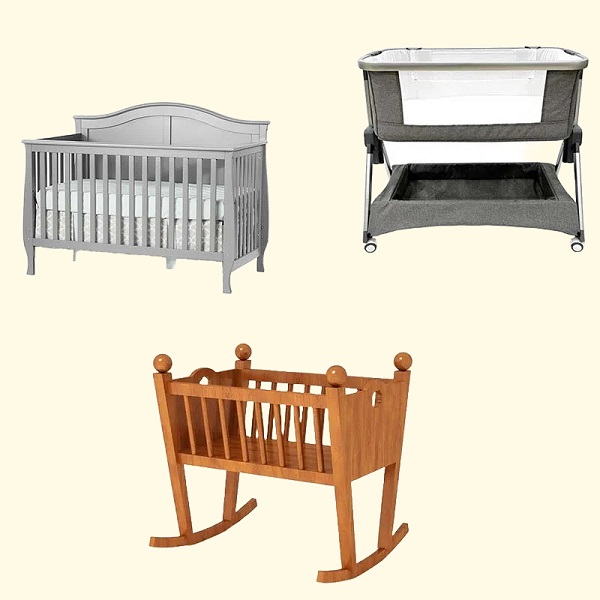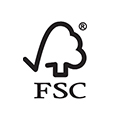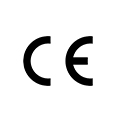Bassinets promise convenience and closeness during those bleary-eyed newborn days, but not all are created equal. From viral TikTok favorites to hand-me-downs with hidden hazards, the wrong choice could put your baby at risk.
The American Academy of Pediatrics (AAP) reports that unsafe sleep environments contribute to over 3,500 infant deaths annually in the U.S., many linked to poorly designed bassinets.
This guide isn’t about fearmongering—it’s about empowerment. We’ll walk you through the non-negotiable safety standards, bust myths about “must-have” features, and even tackle the murky world of secondhand bassinets. By the end, you’ll know exactly what to look for (and what to run from) to create a sleep space that’s as safe as it is snug.
Safety Standards and Certifications
Many products marketed as “bassinets” don’t meet modern safety guidelines. In 2023 alone, the U.S. Consumer Product Safety Commission (CPSC) recalled over 120,000 infant sleep products for hazards like suffocation and collapse. Here’s how to avoid becoming a statistic:
ASTM F2194 Certification(The Gold Standard)
This isn’t just a sticker—it’s your guarantee. Bassinets certified to ASTM F2194 pass 30+ rigorous tests for:
- Stability: Can’t tip over if a toddler leans on it.
- Mattress Firmness: Firm enough to prevent suffocation (tested with a 25-pound weight).
- Side Height: At least 7.5 inches tall to contain rolling babies.
Red Flag Alert: Skip any product labeled a “sleeper,” “napper,” or “lounger” instead of “bassinet”—these terms often sidestep safety regulations.
Flat & Firm Surface
The AAP banned inclined sleepers in 2023 after linking them to 200+ infant deaths. Yet some companies still sell bassinets with hidden inclines.
You can test your bassinet yourself at home by placing a ball in the center; if it rolls, the angle is unsafe. You can also press down on the mattress with your palm; a compliant product should spring back immediately.
Material and Breathability
A 2022 AAP study found that mesh-sided bassinets reduce suffocation risks by 50% compared to solid designs. You should choose a bassinet with 360-degree mesh for airflow. If it is a tightly woven fabric, the gaps should not be wider than ¼ inch.
Avoid bassinets with decorative quilting, padded bumpers, or dangling toys. As the AAP bluntly states: “Bare is best.”
Ağırlık Sınırları
Most bassinets max out at 15–20 pounds or when your baby can push up on their hands. Push past this, and you risk collapse. The Snoo Smart Sleeper (25-pound limit) is a rare exception, but even it can’t outsmart developmental milestones.
Pro Tip: Bookmark the CPSC Recalls Database. A quick search could save your baby’s life.
Bassinet Size, Weight, And Portability
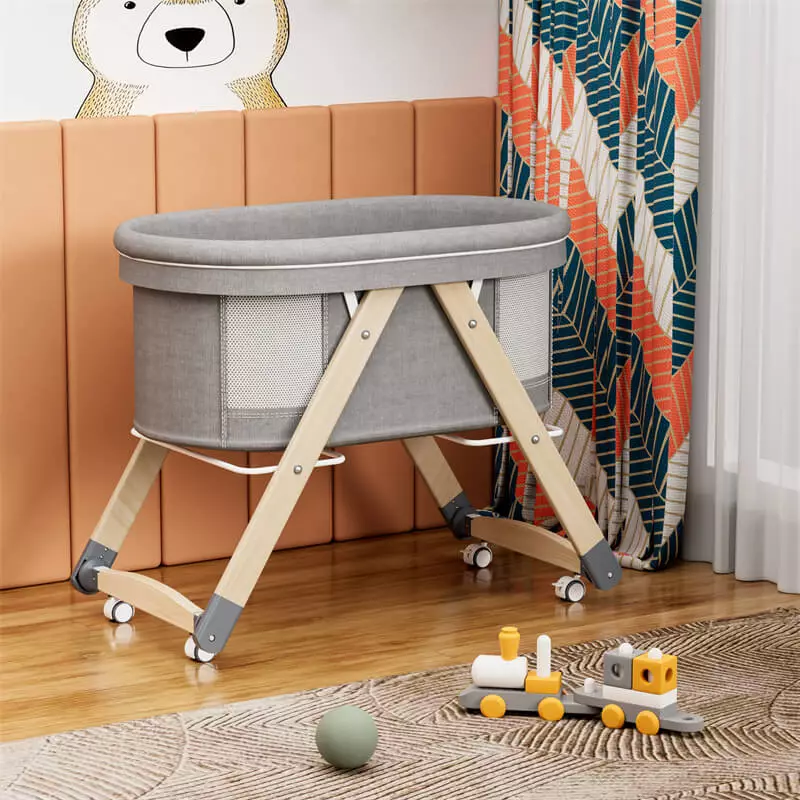
Let’s be honest—parenthood is chaotic enough without tripping over a bulky bassinet in the dark. Finding one that fits your space and lifestyle isn’t just about measurements; it’s about preserving your sanity during those bleary-eyed midnight feeds. Let’s break down the practical considerations that often get overlooked.
Size and Space
A standard bassinet measures around 30 inches long and 18 inches wide, which works well for most bedrooms, but tight spaces demand extra caution.
Before buying, grab a tape measure and map out where the bassinet will go. It should sit snugly beside your bed without blocking doorways, dressers, or that midnight path to the bathroom.
Most bassinets are designed to tuck neatly beside standard beds, but “one-size-fits-all” is a myth. If your bed sits higher off the ground—you’ll want a bassinet with adjustable legs. Otherwise, you’ll end up doing an awkward lean-and-scoop maneuver every time your baby fusses.
Weight Limits and Longevity
We’ve all been there—your baby hits four months, and suddenly their chunky thighs are testing the seams of their bassinet. Most bassinets are designed for short-term use, typically capping at 15–20 pounds.
However, here’s the kicker: Even if your baby hasn’t hit the scale limit, rolling over or pushing up on their hands means it’s time to transition to a crib. No negotiation. If you’re hoping to extend usability, look for bassinets with higher weight capacities or modular designs that convert into playards.
Portability Done Right
A “portable” bassinet should earn its name. If folding it requires a YouTube tutorial and two free hands, keep scrolling. The best ones collapse with a single tug, light enough to carry one-handed while you juggle a diaper bag and a coffee.
Travel-friendly designs often include carrying cases and compact folds, making them ideal for road trips or visits to Grandma’s house. But don’t assume they’re all airport-ready. Look for models certified for air travel—these are tested to fit in overhead bins and withstand turbulence.
Which Bassinet Type Is Right for Your Lifestyle?
Bassinets aren’t one-size-fits-all. Your late-night habits, travel plans, and even your Instagram aesthetic should shape your choice. Let’s break it down:
Bedside Sleepers: For Midnight Snuggles
If you’re breastfeeding or recovering from surgery, a yatak başı beşiği is your MVP. Rolling over, scooping up your baby, and nursing without fully waking up—no stubbed toes or fumbling for the light.
Look for adjustable heights to align with your mattress and breathable mesh walls. Solid sides might look chic, but they trap heat and make it harder to check on your baby without sitting bolt upright.
Travel Bassinets: The Nomad’s Companion
Frequent travelers, this one’s for you. A good travel bassinet folds flat, weighs less than your diaper bag, and fits in the trunk of a compact car. If you’re a plane-hopper, FAA-approved designs are non-negotiable. They’re tested to survive overhead bins and won’t earn you side-eye from flight attendants.
Multi-Functional Bassinets: Tech Meets Sleep
Rocking motions, white noise, Bluetooth apps—some bassinets promise to be the Swiss Army knife of baby gear. But let’s get real: Do you really need your bassinet to sync with your phone?
These features can soothe colicky babies or buy you 20 minutes of peace, but they’re not essentials. Manual controls beat finicky apps at 3 a.m., and a standalone white noise machine costs a fraction of the price.
Eco-Friendly Picks: For the Green-Minded Parent
If you’re passionate about sustainability, eco-friendly bassinets made with organic cotton or non-toxic finishes are worth the splurge. They’re kinder to the planet and your baby’s sensitive skin, but they come with a caveat: “Eco” doesn’t always mean “durable.” Check for certifications like GREENGUARD Gold to avoid greenwashing—because “natural” shouldn’t mean “falls apart in three months.”
Your Decision Toolkit
Still stuck? Answer these questions to narrow your search:
“Will I travel with this?” → Prioritize weight (<10 lbs) and FAA approval.
“Do I need tech help?” → Rocking features soothe colic; white noise aids light sleepers.
“Am I reusing this?” → Splurge on eco-materials for multiple kids.
Budget Considerations When Buying a Bassinet
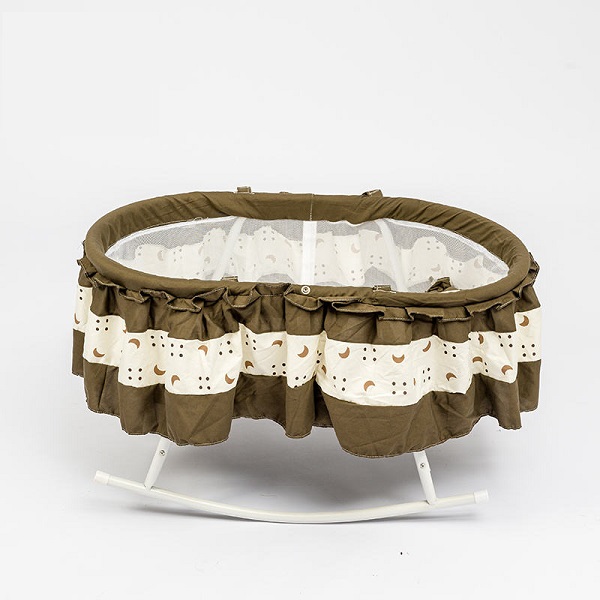
Let’s talk money—because nothing kills the glow of newborn snuggles faster than realizing you overspent on a bassinet your baby outgrows in three months.
Most parents find their bassinet zone in the mid-range (100–100–250). These bassinets typically include must-haves like breathable mesh sides, adjustable heights, and lightweight frames—without the markup for luxuries you’ll never use (looking at you, built-in Bluetooth lullabies).
If you’re tight on cash, prioritize safety certifications over aesthetics. A no-frills bassinet that meets ASTM standards trumps a trendy rattan number that’s better suited for Instagram than actual sleep.
High-end bassinets ($300+) can be worth it if you’re planning multiple kids or crave resale value. Look for durable materials like solid hardwood or organic fabrics that hold up through teething, spit-up, and toddler “renovations.”
Beware of marketplace steals under $50. Many lack certifications have flimsy frames, or—worst case—are recalled models masquerading as “gently used.” I once met a mom who bought a “like new” bassinet online, only to discover it had been discontinued for safety issues. She spent more on return shipping than the bassinet itself.
Is It Safe to Buy a Used Bassinet?
We’ve all scrolled past that too-good-to-be-true bassinet on Facebook Marketplace. Maybe it’s free, or $30 with a “barely used” tag. But before you hit “message seller,” let’s talk about risks—and how to avoid them.
Yes, you can safely buy secondhand… if you’re vigilant. Start by cross-referencing the model with the CPSC recalls database. If it predates 2023, walk away—older models often lack modern safety features like breathable mesh or fixed, non-inclined surfaces.
Next, inspect it like a detective:
- Check for stability: Wobbly legs? Pass.
- Test the mattress: Sagging or stains? Red flag.
- Look for missing parts: No manual or hardware? Not worth the risk.
That adorable heirloom bassinet from your aunt’s attic? It’s probably a trap. Before 2011, safety standards were lax, and drop-sides were common. Even if it’s “never been used,” outdated designs can have deadly gaps or lead-based paint.
Final Word: If you go used, replace the mattress. You don’t know where it’s been, and bacteria love foam like toddlers love crumbs.
Common Mistakes to Avoid
Mistake 1: Using a Bassinet Past Rolling Milestones
The moment your baby shows signs of rolling (usually around 4–6 months), the bassinet becomes a hazard. Their newfound mobility can tip lightweight frames or trap limbs in mesh siding.
Mistake 2: Hanging Toys or Mobiles Inside
That adorable owl mobile? Its strings pose a strangulation risk. Stuffed animals can smother a baby who rolls face-first into them. A 2023 CPSC report linked 12 infant deaths to crib/bassinet accessories.
Mistake 3: Assuming All Bassinets Fit Bedside
Not all bassinets adjust to your bed’s height. A mismatch forces you to lean awkwardly, risking back strain or dropping your baby. Measure your bed’s height from floor to mattress. Look for bassinets with a wide adjustment range (at least 24–36 inches).
Mistake 4: Overloading the Bassinet
The AAP’s “bare is best” rule isn’t a suggestion. Loose blankets, pillows, or even cushy mattress toppers increase suffocation risks. You can use a wearable sleep sack for warmth. If your baby needs elevation for reflux, ask your pediatrician about a firm, FDA-approved wedge.
Çözüm
Choosing a bassinet isn’t about finding the cutest or trendiest—it’s about creating a safe harbor for your baby’s first months. Ready to make your pick? Trust your gut (and this guide). After all, you’re not just buying a bassinet—you’re investing in peace of mind.
In addition, transitioning to a crib soon? Bookmark our guide: [Beşikte Nelere Dikkat Edilmeli?].
Clafbebe is a well-known baby product manufacturer and supplier, providing high-quality bassinets, cribs, toddler beds, learning towers, baby walkers, and playpens. In addition, we also provide product and packaging customization services to meet your market needs, Clafbebe ile iletişime geçin now to get solutions!
Önerilen İlgili Makaleler:

